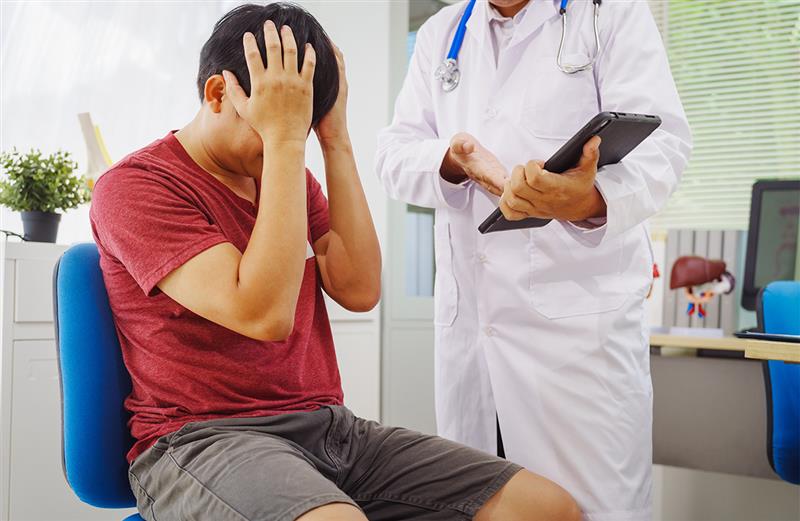After a condom break or unprotected sex, most people want immediate certainty. Unfortunately, sexually transmitted infections do not follow a single timetable. Some cause symptoms quickly, others stay silent, and each infection has its own window period before a test can pick it up. This guide explains how soon symptoms might appear, when different tests become reliable, and how to plan sensible screening without guessing.
Symptoms vs test windows
Symptoms and test accuracy do not line up perfectly. You could have symptoms before a test turns positive, or you could have no symptoms for weeks while a test would already detect infection. That is why a plan that includes both an early screen and a follow up screen is often best.
👉 Need tailored advice right now? Book a confidential consultation with STI Clinic for clear guidance and fast testing.
Typical symptom timelines
These timeframes are general guides. Individual experiences vary, and many people never notice symptoms at all.
- Chlamydia
Symptoms, when they occur, often appear within 1 to 3 weeks. Many people have no symptoms. Possible signs include discharge, pain when urinating, bleeding after sex, pelvic pain, or testicular discomfort.
- Gonorrhoea
Symptoms can start within a few days up to 2 weeks. Men are more likely to notice discharge and burning, but women may have mild or no symptoms that can be mistaken for thrush or a urinary infection.
- Syphilis
The first sore, called a chancre, can appear from 2 to 6 weeks after exposure. It is often painless and may be hidden, then it heals by itself. The infection continues in the body unless treated.
- Herpes simplex virus
A first outbreak can occur within 2 to 12 days, but it can also appear later. Some people never recognise a first episode at all. Painful blisters, tingling, and flu-like feelings are possible.
- HIV
Some people develop a short flu-like illness within 2 to 6 weeks. Others notice nothing. Without treatment, the virus then becomes quiet while it continues to affect the immune system.
- Trichomonas
Symptoms may appear within 1 to 4 weeks, often with vaginal discharge and irritation. Many people have no symptoms.
Remember that symptoms are unreliable. Absence of symptoms does not mean absence of infection.
When tests become reliable
Testing too early can give a false negative result. Use these practical windows to plan your screens. If you test earlier because you are anxious, arrange a follow up at the right time.
- Chlamydia and Gonorrhoea
Nucleic acid tests on urine or swabs are usually reliable from 2 weeks after exposure. If you test earlier, repeat at 2 weeks for confirmation.
- HIV
Early RNA or NAAT tests can detect infection from around 10 days. Standard fourth generation antigen and antibody tests are reliable from 28 days. A final confirmatory test may be advised at 8 to 12 weeks after high risk exposure.
- Syphilis
Blood tests often become positive from about 3 weeks, though some people need longer. If the first test is negative but suspicion is high, repeat testing is important.
- Hepatitis B and C
Blood tests are commonly reliable from 4 to 6 weeks, with follow up if the risk was significant.
- Herpes
The most useful test is a swab from a fresh blister or sore. Blood tests can be difficult to interpret for new infections and are not routinely recommended without symptoms.
👉 Book your initial test now and plan the right follow up with a clinician.
A sensible testing plan after a risk
Here is a practical approach that balances speed and accuracy.
- Right away
If pregnancy is a concern, consider emergency contraception. If the exposure could involve HIV, ask promptly about post exposure prophylaxis, which must start within a short time frame. Book a consultation to map your personal risk and testing plan.
- At 2 weeks
Test for chlamydia and gonorrhoea using urine or swabs. Include throat and rectal swabs if relevant to your sexual activity.
- At 4 to 6 weeks
Test for HIV using a fourth generation test. Add syphilis and hepatitis screening. If you used an early HIV RNA test at around 10 days, still do this follow up because it captures more cases reliably.
- At 8 to 12 weeks
If the exposure was high risk, a final confirmatory HIV and syphilis test provides closure.
During this period, use condoms for all sexual contact to protect you and your partner and to avoid uncertainty about new exposures.
When to test sooner than the schedule
Test straight away if you develop symptoms such as unusual discharge, pain when urinating, genital sores or blisters, bleeding after sex, pelvic pain, testicular swelling, or a persistent sore throat after oral sex. A clinician can swab active lesions or select targeted tests that are informative even early on.
Get Tested Early for Peace of Mind
Don’t wait for symptoms to appear. Book your private STI test today and get accurate results quickly. Protect your health and your peace of mind.
How to reduce anxiety while you wait
An agreed plan reduces the urge to test daily. Book both appointments at the start, use reminders, and focus on self care. Remember that most bacterial infections are curable and viral infections are highly manageable when identified early. The goal is timely certainty, not endless second guessing.
👉 Ready to move from worry to a clear plan? Book your confidential screen with STI Clinic for fast results and straightforward guidance.

